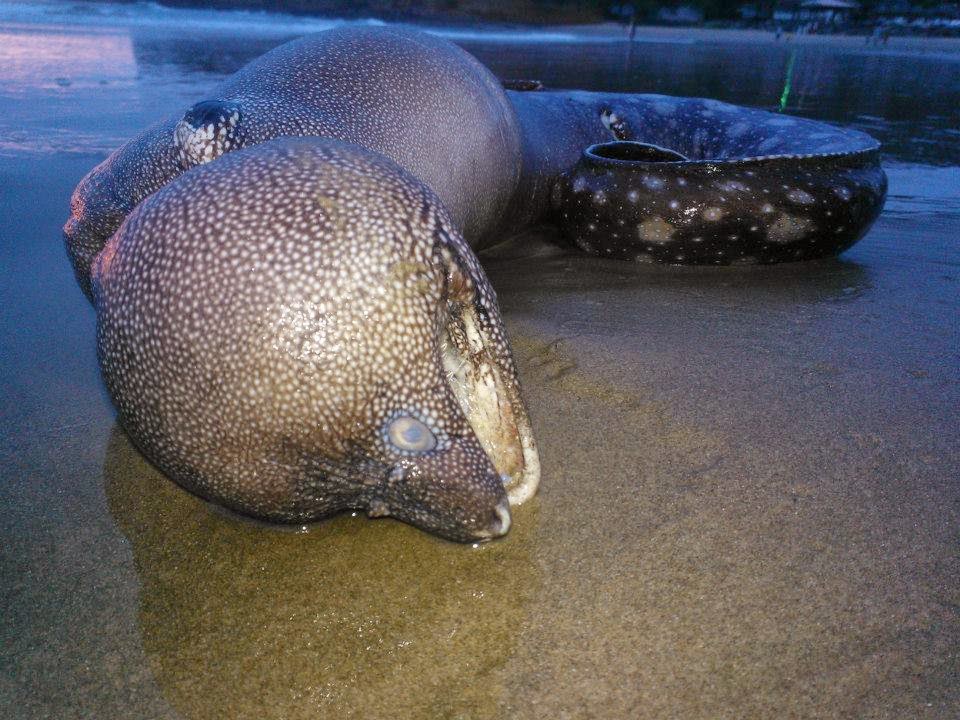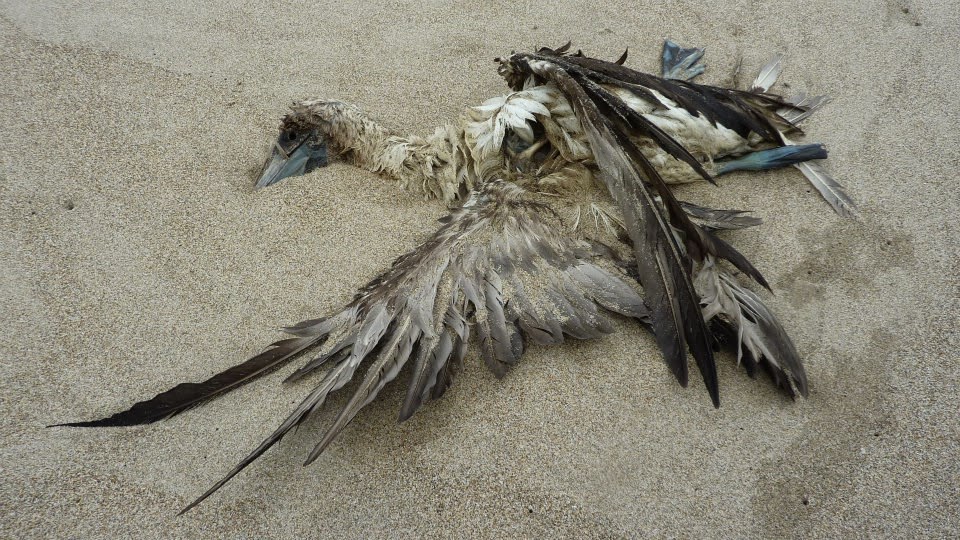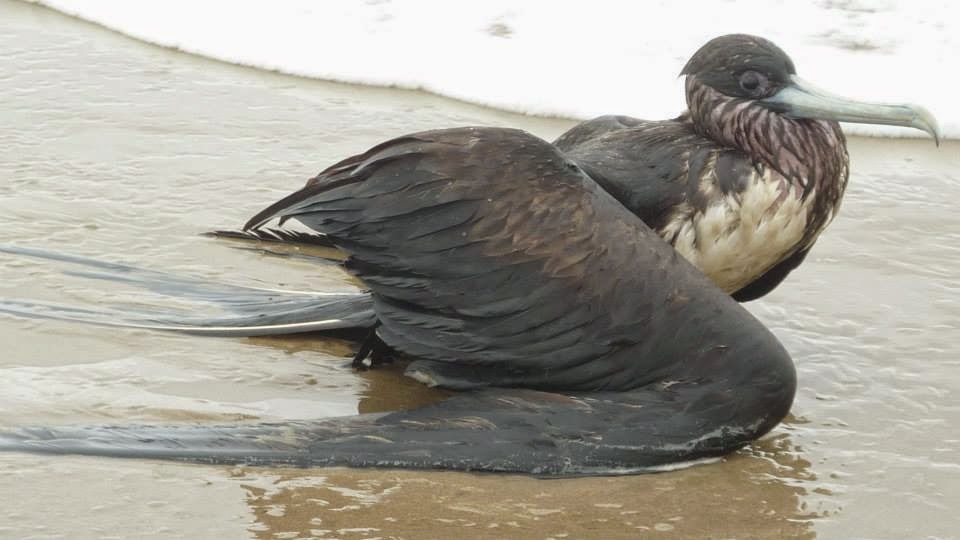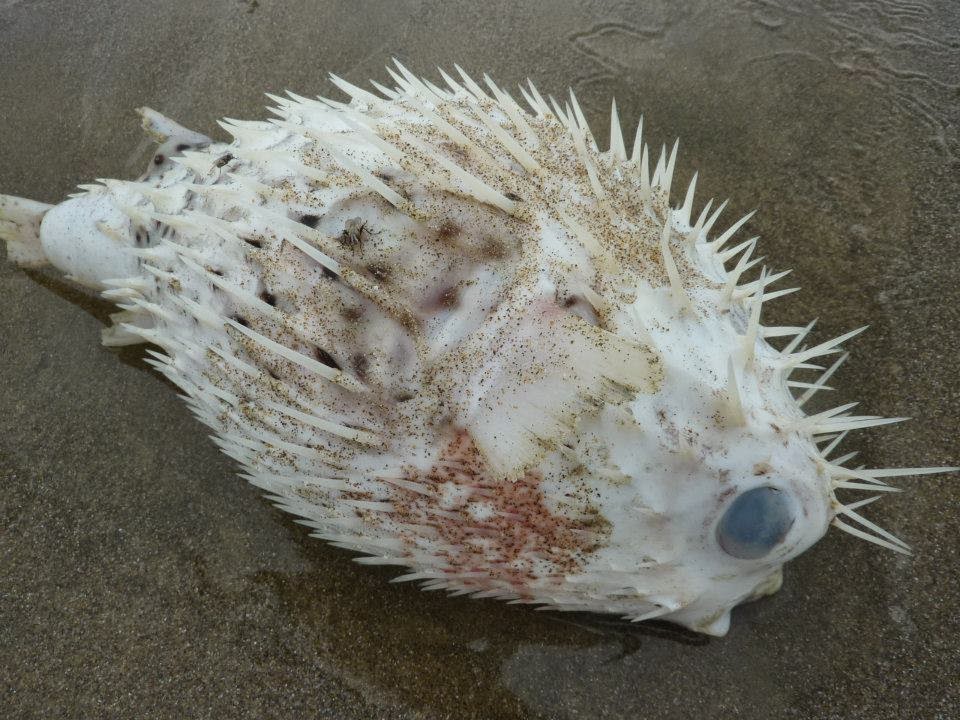![]()
 |
| Sea turtle in advanced stage of decomposition. Photo: Beth Pitts (Manglaralto, September 30) |
Walking along the beaches of the Ecuadorian blue coast, in the provinces of Santa Elena, Manabí and Guayas, is undoubtedly one of the most pleasant experiences at any time of the year due to the visual delight of the landscape in general.
However, for those who have developed a little more of an ability to observe details, the large number of dead mammals, birds and other marine species that can be found on the coasts of these provinces, on the sand and in different states of decomposition, is striking.
 |
| Eel found on the beaches of Montañita, tangled with fishing gear. Photo: Whitney Bennett (October, 2014) |
Walking through the resort of Playas, they began to find hundreds of dead marine animals along nearly two kilometers of beaches, where even endemic species of the Galapagos Islands were observed.
 |
| Since June, there are hundreds of boobies that have been found dead on the Ecuadorian coast. Image from Sept.27/2014 between Manglaralto and Rio Chico (Beth Pitts) |
Marine litter is undoubtedly the obvious cause in many of these cases, where it is easy to spot species such as turtles, sea lions and others, which are wrapped in fishing nets or displaying tackle such as hooks in their throats.
Theories such as radioactive contamination caused by the Fukushima nuclear disaster are also being considered by certain groups of environmental activists who express their concern about the growing number of dead marine animals present on the coasts of the Pacific.
southern aquifer.For Fausto Valero (director of this publication), the delay and lack of necessary equipment with which technicians from the Ministry of Environment are providing is worrying.
 |
| A dying frigate on the beaches of Rio Chico. Photo: Beth Pitts (September 27) |
They deal with these cases, "on one occasion we reported a turtle in Ballenita that had problems, the technicians arrived almost two hours later with the best of intentions but the only equipment they had with them were rubber gloves and vests with the Ministry's insignia, when they arrived they could do little, the turtle died in the hands of the officials because its throat was blocked"
Although the Ministry insists on its website about the continuous monitoring of these beaches, the truth is that the large number of dead animals that remain in the open, without being
 |
| Three sea turtles in advanced condition of decomposition were found in a route between San José and Curia. Photo: Jorge Luis Cholango (September 18) |
buried under the parameters established for these cases, becoming a threat to the users of these beaches due to the possibility of contracting diseases caused by zoonoses.
 |
| Rotting puffer fish are found in abundant quantity throughout the coastal profile in Santa Elena. Photo: Beth Pitts |
Suárez says that Ministry technicians are seen on their tours with some frequency, but that there is no doubt that these are not enough, as demonstrated by the photographic tour of some northern beaches shown in this article.
Biologist Suarez insists on the need for authorities to take the necessary measures because the dangers of diseases caused by viruses or bacteria that can be transmitted to humans are present. "I have seen how artisans go to dead sea lions in search of their teeth to carry out their artisanal work, without any kind of protection," Suarez concludes.
